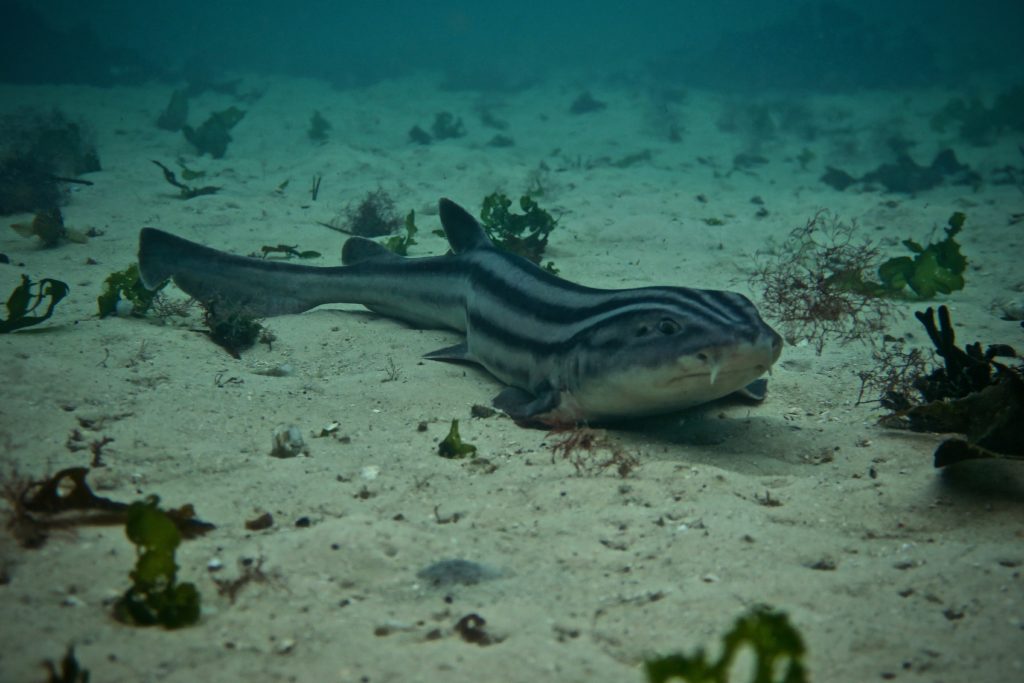Sharks have been portrayed as monsters by the media over the years, as vicious mindless man-eaters, but this is simply not the truth. Promoting fear of sharks is dangerous not only for the species but for us too as without them, ecosystems will fall apart and affect humans as well. To save us we must protect sharks. Elasmobranchs, the subclass which all sharks fall under, are beautiful charismatic creatures with many unique features making them remarkable animals.
Sharks have been around for millions of years, long before humans ever existed, fossils date back to 450 million years ago, 90 million years before trees and 190 million years before dinosaurs. There are more than 470 species of sharks split across 13 orders, 27 of these can be found in false bay alone. Only 34 species are responsible for human bites and only 1% of these are fatal.
Unique characteristics that make elasmobranchs interesting:
- They have cartilaginous skeletons.
- They have ampullae of lorenzini, these have electroreceptive pores and sensory cells that detect movement in the water and are extremely sensitive.
- The lateral line describes sensory pores that runs from the head of shark to tail, this explains why they are top predators, similar to structure of human’s inner ear with small hairs to pick up movement and vibrations.
The range in the species size and characteristics is vast, from well known larger species to small sand dwellers with unusual features.
A common misconception of sharks is that they need to continuously swim to breath. This is not true for all species but for some for example, pelagic species using ram ventilation. As well as this, benthic species that can use using buccal breathing – drawing water in through their mouths and over their gills – or have a spiracle which is a small hole behind the eye to draw in water to pass over gills allowing them to breathe. We are not part of the shark’s natural diet; we live on land these sharks have survived long before humans and, in the ocean, therefore sharks do not actively seek human as prey even if they are in water.

Another common misconception is the shark’s ability to smell human blood and this to lead to an attack, commonly portrayed in the media, many studies however have disproved this with sharks, although able to smell blood, can detect this from only meters away and have no reaction unless it is to a large amount of blood as seen with bait for example.
Teeth – most have smaller teeth for crushing and grinding up shells and crustaceans, some have slightly sharper teeth for catching larger prey like cephalopods and some have much sharper teeth for biting chunks from prey and some are filter feeders. Their teeth are attached to their gums instead of jaws therefore can replace rows of their teeth throughout their lives, some species can do this every month.

The number of sharks left in the wild is rapidly declining due to threats like Shark finning, which is obtaining a shark’s fins for food and unnecessary medicine and is a barbaric practice that still occurs in our oceans. Other threats include overfishing, bycatch (accidental capture in fishing nets) and changes to their natural environment. Dwindling apex predators in our oceans will create unbalanced ecosystems causing increases and decreases in other lower trophic species which are no longer kept in check by the apex predators.
One of Cape RADD’s main research project is called Finspotter, studying the smaller species of shark which are endemic to South African waters. Shy sharks and cat sharks, smaller harmless sharks make up majority of these species. We calculate and monitor population density as some of these are now classified as endangered. 30% of all living shark species are near threatened so it is important we do everything in our power to protect them.
